Story of a flower
Flower Story - Enlightening Short Bedtime Stories For Kids
A Short Story of a Beautiful Flower
Last updated date: 16th Mar 2023
•
Total views: 74.1k
•
Views today: 0.53k
Colourful flowers or fragrant flowers, which one do you prefer? While some flowers like orchids look pretty, others like tuberose smell good. And then comes the flowers like roses, that have both. Here’s a short story on flowers that unfolds the tale of a beautiful flower that bloomed in the garden of God. The poor little flower had lost its beauty for once. Let us read why this flower lost its beauty and how she regained it, becoming the favourite of all.
The Beautiful Flower
Once upon a time, in the garden of paradise, there bloomed a beautiful flower. There were numerous pretty roses, lilies, tulips, marigolds, daisies, orchids, and many other flowers in the garden. However, when this young flower bloomed its petals, the whole garden found her to be the most beautiful of them all.
Image of the colourful garden where the beautiful flower bloomed
The towering trees bowed down to take a glimpse of her, the butterflies and the honey bees spread the word that she was the most beautiful flower that has ever bloomed in their garden. All the other flowers thought about what could be her name and where she was before. They called her God’s favourite flower.
The beautiful flower was very happy as everyone admired her in the garden. She had vibrant layered petals. Her petals were brilliant red, sunny yellow, and stunning orange. Every morning the grass would curl up around her stem to greet her and the rest of the garden would spend the day praising her.
Image the beautiful flower
One morning, it started to rain heavily and did not stop until the night. When the rain stopped, all the flowers, plants, trees, butterflies, and honeybees had fallen asleep. The next day when the grass curled up at the feet of the beautiful flower, it was appalled to see her colourless.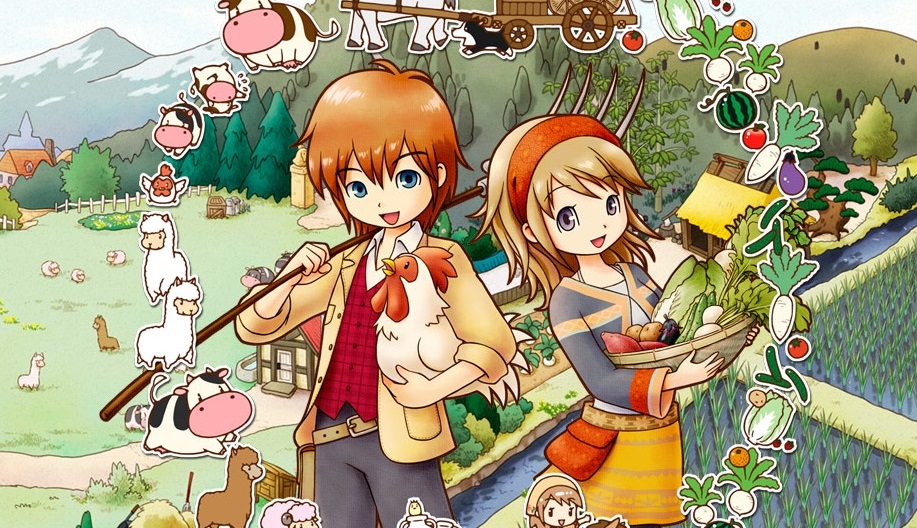 Soon she woke up and saw that the colours had gone off from her petals. It was the rain that washed off its brilliant colours. She could not stop weeping as her petals were white as snow.
Soon she woke up and saw that the colours had gone off from her petals. It was the rain that washed off its brilliant colours. She could not stop weeping as her petals were white as snow.
Image of the flower when its petals became white
After some time, a fairy appeared in the garden. She wore a long long dress coloured just like the rainbow. Seeing the beautiful flower weep, she said, “What is wrong with you my child? Why are you weeping?”. The flower replied, “The rain has washed away my hues and now my petals are colourless.”. The fairy felt bad for her and promised to give her colours once again.
The fairy said, “Oh my dear flower, do not be upset. I will paint your petals bright with the colour markers at the end of my dress. However, I have one condition for you. If I paint your petals bright, I shall also give you a fresh fragrance. Promise me to delight every creature in this garden with your charm.”
As the beautiful flower agreed to this, the fairy patiently painted her petals with her magic markers. Her petals had hues even more brilliant than before. The fairy also spilled her little bottle of fresh fragrance on her. God’s favourite flower was once again the most beautiful of them all. The fragrance of the flower spread all across the garden and all the creatures there were delighted with the fresh scent in the air. The beautiful flower thanked the fairy for the gift. She continued flooding the garden with her sweet scent and delighted everyone in the garden with her charm.
Her petals had hues even more brilliant than before. The fairy also spilled her little bottle of fresh fragrance on her. God’s favourite flower was once again the most beautiful of them all. The fragrance of the flower spread all across the garden and all the creatures there were delighted with the fresh scent in the air. The beautiful flower thanked the fairy for the gift. She continued flooding the garden with her sweet scent and delighted everyone in the garden with her charm.
Image of the beautiful flower after the fairy painted her
Conclusion
This short story on flowers teaches us that kindness makes the world a more beautiful place. The fairy not only made the flower beautiful again, but it also made the garden a more pleasant place with her kindness. Hence, sharing our virtues and spreading kindness is going to make the world a better place. This type of short story for kids helps us to inculcate simple yet valuable perspectives among them seamlessly.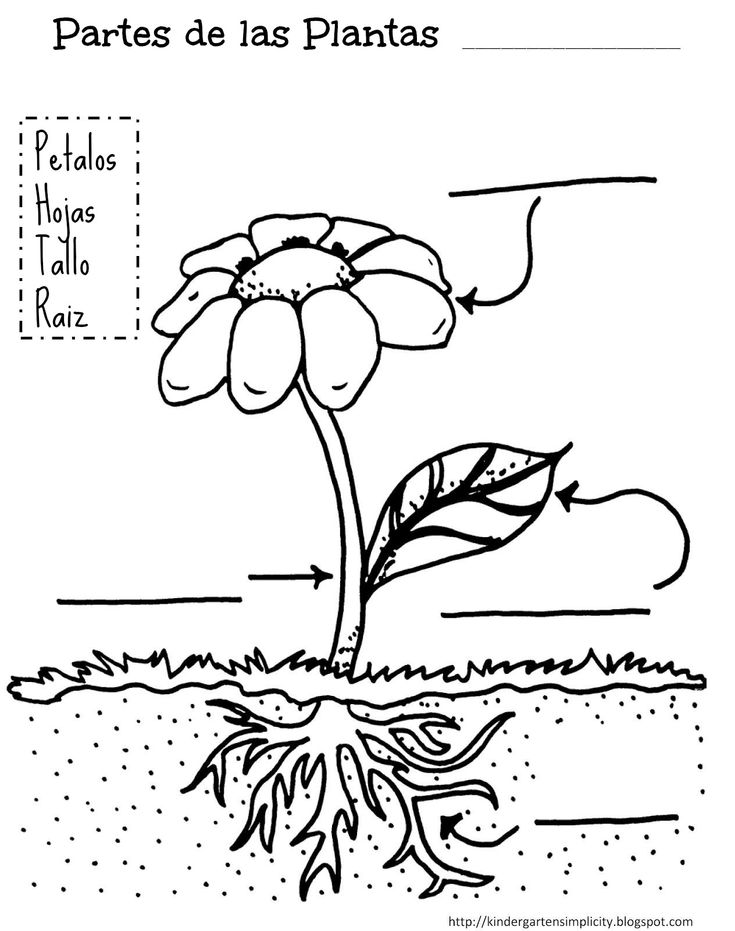 So, let your kids dive into the world of captivating short stories with morals on Vedantu and shape their personalities better.
So, let your kids dive into the world of captivating short stories with morals on Vedantu and shape their personalities better.
Want to read offline? download full PDF here
Download full PDF
Is this page helpful?
Courses for kids
English Superstar
Grade LKG - 2
Maths Classes
Grade 1 - 2
Spoken English
Grade 3 - 5
the flower life cycle by florist artist Azuma Makoto — Cercle
- #9 Flowers
- Illustration
- Video
Japanese florist artist Azuma Makoto captures the life cycle of flowers through moving illustration. In 2016, he surrounded himself with London illustrator Katie Scott, specialized in botanical drawings and with animator James Paulley for his 3D animations. The two creatives explore a dense and detailed universe where flowers, in all their forms and textures, are the main protagonists. The video installation “Story of Flowers” is the first result of their collective work. “This animated series is being released as a gift to children around the world,” says the florist.
Botanical animation “Story of Flowers”, Directed by: Azuma Makoto, Illustration by: Katie Scott, Animation by: James Paulley, Visual Supervisor: Shunsuke Shiinoki, Project Management by: Eri Narita
In this three-minute story, birds and bees punctuate the flowering process, while the sound design reflect the surrounding flora and fauna and makes the flowers “smell”. It is alongside Azuma Makoto’s plant sculptures that the video installation is presented, giving children and adults the opportunity to get lost in the history of flowers.
Four years later, the project was developed again under the leadership of the artist florist. More complex visually than thematically than its first edition, “Story of Flowers 2” is aimed at adults and children alike.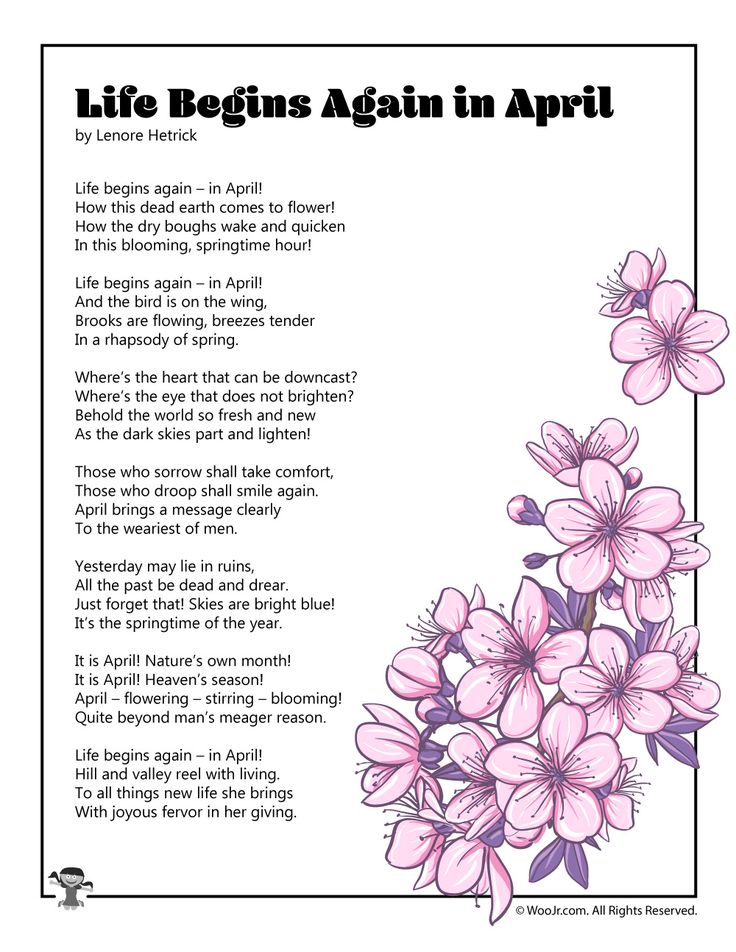 While the first story tells the life cycle of plants, from their germination to their rotting, the second part explores in a sensitive way the cultural and emotional relationship between flowers and humans.
While the first story tells the life cycle of plants, from their germination to their rotting, the second part explores in a sensitive way the cultural and emotional relationship between flowers and humans.
Rather than creating a literal storytelling, illustrator Katie Scott prefers the intrinsic sensitivity to the bright, sometimes soft colors of the flowers that in themselves tell the story. James Paulley’s animation leaves room for different degrees of comprehension, making the flowers deeply human through a wide range of emotions; from funerals to the happiest celebrations …
Botanical animation “Story of Flowers 2”, Directed by: Azuma Makoto, Illustration by: Katie Scott, Animation by: James Paulley, Visual Supervise by: Shunsuke Shiinoki, Project Management by: Eri Narita
“Story of Flowers”, directed by: Azuma Makoto, illustration by: Katie Scott, animation by: James Paulley, visual Supervisor: Shunsuke Shiinoki, project management by: Eri Narita“Story of Flowers”, directed by: Azuma Makoto, illustration by: Katie Scott, animation by: James Paulley, visual Supervisor: Shunsuke Shiinoki, project management by: Eri Narita“Story of Flowers”, directed by: Azuma Makoto, illustration by: Katie Scott, animation by: James Paulley, visual Supervisor: Shunsuke Shiinoki, project management by: Eri Narita“Story of Flowers”, directed by: Azuma Makoto, illustration by: Katie Scott, animation by: James Paulley, visual Supervisor: Shunsuke Shiinoki, project management by: Eri Narita“Story of Flowers”, directed by: Azuma Makoto, illustration by: Katie Scott, animation by: James Paulley, visual Supervisor: Shunsuke Shiinoki, project management by: Eri Narita“Story of Flowers”, directed by: Azuma Makoto, illustration by: Katie Scott, animation by: James Paulley, visual Supervisor: Shunsuke Shiinoki, project management by: Eri NaritaAzuma Makoto’s website: azumamakoto. com
com
Katie Scott’s website: katie-scott.com
© Azuma Makoto & Katie Scott
ASTRA Aster - aster means "star" in the language of the ancient Romans. At dusk, when the thin and sharp light of bright constellations sways in the sky, the aster seems to send greetings from the earth to her distant sisters, who are so similar to her. The Oneida Indians have such a tradition. The young hunter fell in love with the girl, and she was indifferent to him. - If I knock down a star from the sky, will you become mine? he asked the proud beauty. No one else from their tribe could make the bride happy with such a gift, and the girl, thinking that the hunter was just a braggart, agreed. When the Indians from the neighboring wigwams found out about this, they began to laugh at the young man. But the hunter stood his ground. “Come to the big meadow in the evening,” he said. |
MAGNOLIA According to Chinese legend, in ancient times, evil Honghuzi attacked a peaceful Chinese village, killed men, old people and children, took cattle, destroyed rice crops, and tied up one hundred of the most beautiful girls and left them in the square. Ninety-nine days and nights the invaders had fun, and every morning they killed one of the captives. When the time came to die last, she hugged the ground on which the dead bodies of her friends lay, and began to lament bitterly: “Native land! You raised our fathers and mothers, you saw death and our torment. Do not allow decay to devastate our young bodies. Don't let us disappear forever!" And when the drunken hunghuses woke up the next morning, there was not a single girl in the square, only a large beautiful tree grew there, and a hundred beautiful white and pink buds were ready to open on it in all their splendor. |
TULIPA long time ago, human happiness was hidden in tightly compressed tulip buds. And no one by force or cunning could get to him. One day a beggar woman with a golden-haired child was walking through the meadow. She did not even think of getting to the heart of the tulip and taking her happiness from there. But the baby escaped from her hands and, laughing, rushed to the marvelous flower. The tulip, seeing the purity of the child's feelings, opened its petals. Now, in early spring, these delicate flowers readily open their hearts to us and give happiness to anyone who yearns for it. |
VASILEK An ancient Russian legend: One day the sky reproached the grain field with ingratitude. |
CAMOMILE There was a girl in the world, and she had a favorite - Roman, who made gifts for her with his own hands, turned every day of the girl's life into a holiday! Once Roman went to bed - and he dreamed of a simple flower - a yellow core and white rays that diverged to the sides from the core. |
CHRYSANTHEM In the East, this flower, which is already 2,500 years old, has been raised to an unattainable height. Chrysanthemum was given the status of a national symbol. In Japan, this flower is present on the national emblem of the country, on documents of national importance, on the highest Japanese order, which is called the "Order of Chrysanthemums". |
GLADIOLUUS Romans considered gladiolus the flower of gladiators. According to legend, the cruel Roman commander captured the Thracian warriors and ordered them to be turned into gladiators, and the commander ordered the most beautiful, brave, dexterous and loyal friends Sevtus and Teresa to fight each other first, promising that the winner would receive the hand of his daughter and be released to freedom. Many curious townspeople converged to look at this spectacle. However, they did not see what they wanted: when the war trumpets blew, calling the brave warriors to battle, Sevt and Teres stuck their swords into the ground and rushed to each other with open arms. The crowd roared indignantly. The trumpets sounded again, demanding a duel, and when the soldiers again did not satisfy the expectations of the bloodthirsty Romans, they were put to death. But as soon as the bodies of the defeated touched the ground, blooming gladioli grew from the hilts of their swords, which to this day are considered a symbol of friendship, loyalty, memory and nobility. |
DAISY The flower got its name "daisy" from the Greek word margarites - "pearl". This flower has a very beautiful legend about its origin. When, having learned the good news from the Archangel Gabriel, the Blessed Virgin went to Elizabeth, everywhere where the foot of the future Mother of God stepped, small white flowers grew. White, in the form of radiance, the petals spoke of the glory of God, and the golden mean - of the sacred fire that burned in the heart of Mary. There is another legend about the origin of daisies. The Blessed Virgin, while still a child, looked at the sky at night, and She wished that the wonderful stars would become earthly flowers. Then the stars were reflected in brilliant drops of dew, and in the morning the earth was strewn with white flowers. And since the buds of daisies look like stars, people to this day believe that these flowers keep the secret of human happiness, and ask about it, counting their petals. |
PION One day the goddess Flora was going on a long journey and during her absence she decided to choose a replacement for herself. She informed the flowers about her decision and gave them 48 hours to consider a candidate for such an honorary post. At the appointed hour, everyone gathered in the forest clearing. |
FORGET-ON An ancient Roman legend tells how the forget-me-not got its name. One day, the goddess of vegetation, Flora, descended to earth and began to bestow names on flowers. |
GINSENG A long time ago, no one remembers when, two ancient Chinese families Xi Liadnji and Liang Seer lived next door. In the family of Xi Lianji, a fearless warrior named Ginseng was famous. He was brave and kind, defended the weak, helped the poor. These qualities passed to him from his ancestors, who descended from the king of forest animals - the tiger. Warrior Song Shiho - a representative of the Liang Seer clan - unlike Ginseng, was insidious, evil, cruel and rude, but very handsome and stately. One day a terrible monster attacked the country - a yellow dragon. |
Orchid A long time ago, long before the appearance of people, the only visible parts of the earth were the snow-capped peaks of high mountains. |
LILY In ancient Germanic mythology, the thunder god Thor was always depicted holding a lightning bolt in his right hand, and a scepter crowned with a lily in his left. She also adorned the brow of the ancient inhabitants of Pomerania during the festivities in honor of the goddess of spring, and her fragrant aureole served in the German fairy-tale world as a magic wand for Oberon and the home of small fairy-tale creatures - elves. According to these legends, each lily had its own elf, who was born with her and died with her. Corollas of these flowers served as these tiny creatures, bells, and shaking them, they called their pious brethren to prayer. |
LILY OF THE VALLEY When lilies of the valley bloom, it seems that the very air in the forest is infused with their fragrance. No wonder there is a saying among the people: "Lilies of the valley - breathe!". The lily of the valley will fade, and a large red berry appears in place of the crumbled petals. |
SNOWDROP There are still snowdrifts, and on the thawed patches you can already see flowers blue as the sky - small, quiet, delicately smelling. And it begins to seem that it was them, tiny, but brave, that the winter was frightened and surrendered. Snowdrops are freezing in a cruel wind, they are lonely, uncomfortable and unaware, probably that it is from them that the last snow is about to start running away . |
| References:
Site material:
|
Beautiful legends about flowers - rose, aster, lily, lily of the valley, tulip, iris, lotus their composition, but also an obligatory part of the worldview heritage of each person, since the knowledge of these legends allows them to decipher the hidden meanings of gifts.
This article presents the legends about the colors that are the most popular among Russian buyers.
Legends about roses
Legends exist in almost every Asian and European culture - it is not for nothing that she received the unspoken title of "Queen of Flowers". According to ancient Indian legend, the rose was recognized as the most beautiful flower in the dispute between Brahma and Vishnu. The ancient epic connects the appearance of a rose with the birth of the goddess of love and beauty Aphrodite in the waves of Cyprus. According to Greek legend, the white rose arose from the snow-white sea foam that covered the body of Aphrodite after leaving the shore, and the aroma of the rose provided her with the nectar of the admiring gods, with which they sprinkled the newborn beautiful flower. A red rose appeared when drops of divine blood fell on a white rose from the feet of Aphrodite, cut on thorns, running to her wounded lover - the beautiful Adonis, whose name, by the way, was subsequently given to another flower. The rose became the personification of courage, the ancient Greeks and Romans showered the path of the victors returning from the war with its petals, and wreaths of roses often adorned the helmets of knights in the Middle Ages.
Legends about the lily flower
Legends about the lily flower are no less numerous among different nations. The ancient Greeks associated the divine origin of the lily with the fall of drops of breast milk of the goddess Hera when feeding the newborn god of war Ares. Among the ancient Egyptians, the lily meant fertility, among the Roman Christians, who believed that the archangel Gabriel, who announced the good news to the Virgin Mary, brought the lily, the flower was the personification of modesty, chastity and intelligence. The origin of the red Siberian lily in Rus' was associated with one of the Cossacks killed by enemies - participants in the campaign of Yermak, from whose heart it allegedly sprouted. It is also popularly known as "royal curls".
The origin of the red Siberian lily in Rus' was associated with one of the Cossacks killed by enemies - participants in the campaign of Yermak, from whose heart it allegedly sprouted. It is also popularly known as "royal curls".
Lotus legends
Lotus has been and remains one of the most revered flowers in the East and is invariably accompanied by the prefix "sacred". In ancient Egypt, the lotus symbolizes the resurrection from the world of the dead, and the hieroglyph in the form of this flower meant the word "joy". Among the Phoenicians and Assyrians, the lotus was considered the flower of death, but at the same time it was by no means mourning, since at the same time it meant a new life, directly arising from the one that had ended. In ancient China, a lotus flower with buds, flowers and seeds symbolizes the infinity of time - past, present and future.
Legends of the iris flower
The Greek legend about the origin of the iris is associated with the rainbow goddess Irida.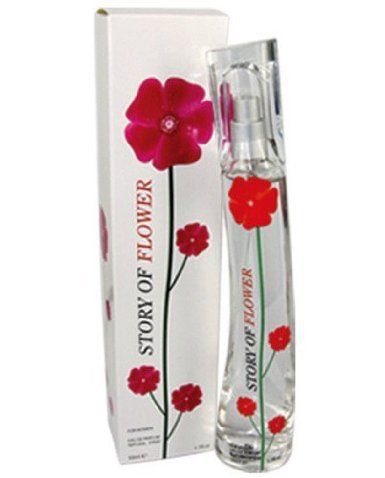 The Greeks believed that the variety of shades of this flower is akin to the many colors represented in the rainbow. In Japan, iris flowers symbolize courage and courage, in Egyptian culture - eloquence, and in China - sadness and sorrow, so they landed on the graves of the dead.
The Greeks believed that the variety of shades of this flower is akin to the many colors represented in the rainbow. In Japan, iris flowers symbolize courage and courage, in Egyptian culture - eloquence, and in China - sadness and sorrow, so they landed on the graves of the dead.
Peony legends
The peony owes its origin to the area of Paeonia, famous for the growth of this flower, not bypassed by the “legendary” habit of the Roman people. According to ancient legend, the god of the underworld Pluto turned the talented doctor Pion into this flower, whom his teacher Aesculapius wanted to kill out of envy. In China, the peony is considered the personification of honor and an expression of nobility, while in India and Pakistan, on the contrary, the peony is a symbol of swagger and snobbery.
Legends about the aster flower
The legend about the aster connects the origin of this flower with the tears of Aphrodite, embodied in the sky by the constellation Virgo, which became cosmic dust and descended to the earth in the form of a new flower with petals in the form of rays of distant stars. But if in Greece the aster symbolizes love, in China it symbolizes elegance, modesty and charm. In Hungary, the aster is called the "autumn rose" and it is believed that the smoke from the fire, into which aster petals are thrown, is able to drive away snakes.
But if in Greece the aster symbolizes love, in China it symbolizes elegance, modesty and charm. In Hungary, the aster is called the "autumn rose" and it is believed that the smoke from the fire, into which aster petals are thrown, is able to drive away snakes.
The legend of the chrysanthemum
The Eastern legend of the chrysanthemum, in which this flower is called the flower of the white dragon, tells how this mythical creature once attacked the Sun and, in a rage, began to tear it with claws and fangs. But the celestial body immediately healed its wounds, and the pieces of the Sun torn off by the dragon that fell to Earth turned from sparks into flowers. Chrysanthemums are considered a symbol of the Japanese imperial house, they are depicted on the coat of arms of the Land of the Rising Sun and its coins.
The legend about the tulip flower
The legend about the origin of the tulip is of Persian origin and tells about the local king Farhad, who fell in love with the oriental beauty Shirin.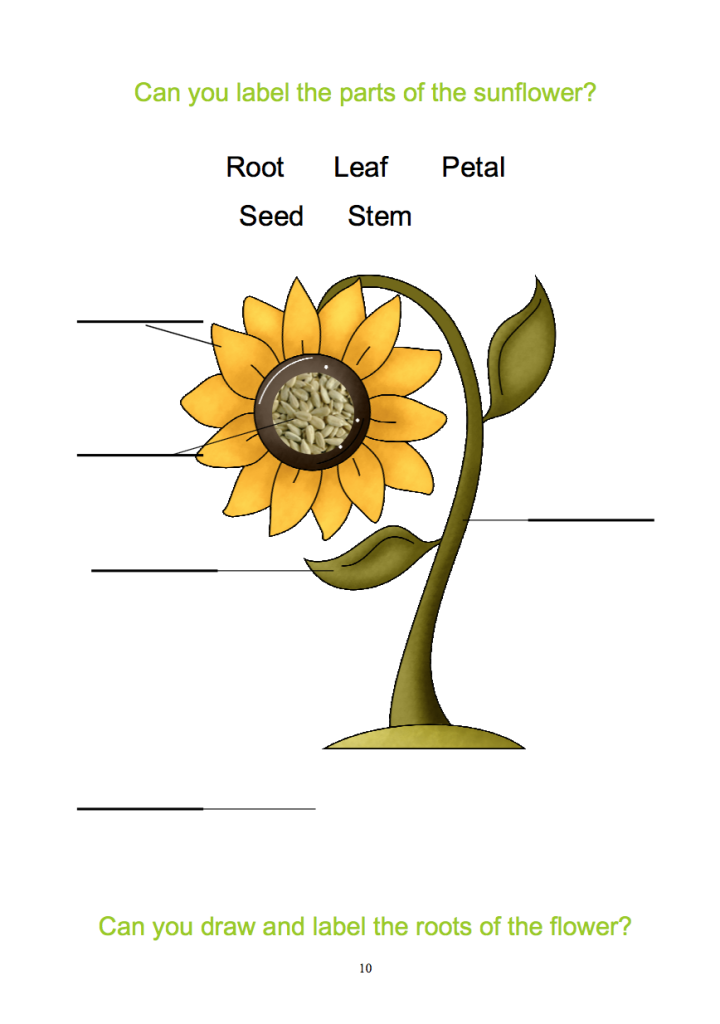

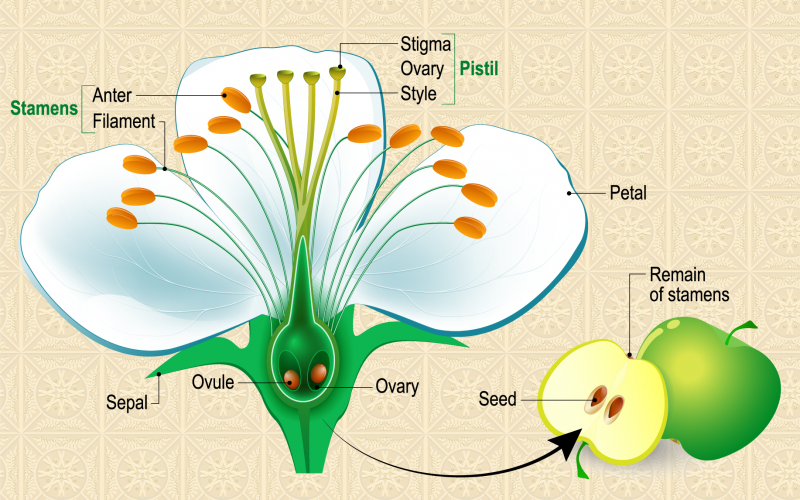 When bright stars flashed in the evening in the sky, all the men from the Oneida tribe gathered to see if the young hunter could fulfill his promise. The young man raised his bow, pulled the string and sent an arrow up. And a moment later, high in the sky, a silver star shattered into small sparks - it was struck by a hunter's well-aimed arrow. Only the desired happiness was bypassed. God got angry at a mere mortal who dared to shoot down the stars from the sky. After all, if other lovers also follow his example, then there will be no stars left in the sky at all, and the moon will hardly survive ... And he sent a terrible storm to the earth. For three days and three nights a fierce hurricane raged, everything on earth was shrouded in thick darkness, the sea overflowed its banks, and where there was an ocean before, dry land formed, and trees fell with a groan into the water, a steep wave carried away Indian huts, turned over fragile pirogues, on which people tried to escape ... When the storm subsided, no one could find the daredevil who knocked down a star from the sky.
When bright stars flashed in the evening in the sky, all the men from the Oneida tribe gathered to see if the young hunter could fulfill his promise. The young man raised his bow, pulled the string and sent an arrow up. And a moment later, high in the sky, a silver star shattered into small sparks - it was struck by a hunter's well-aimed arrow. Only the desired happiness was bypassed. God got angry at a mere mortal who dared to shoot down the stars from the sky. After all, if other lovers also follow his example, then there will be no stars left in the sky at all, and the moon will hardly survive ... And he sent a terrible storm to the earth. For three days and three nights a fierce hurricane raged, everything on earth was shrouded in thick darkness, the sea overflowed its banks, and where there was an ocean before, dry land formed, and trees fell with a groan into the water, a steep wave carried away Indian huts, turned over fragile pirogues, on which people tried to escape ... When the storm subsided, no one could find the daredevil who knocked down a star from the sky.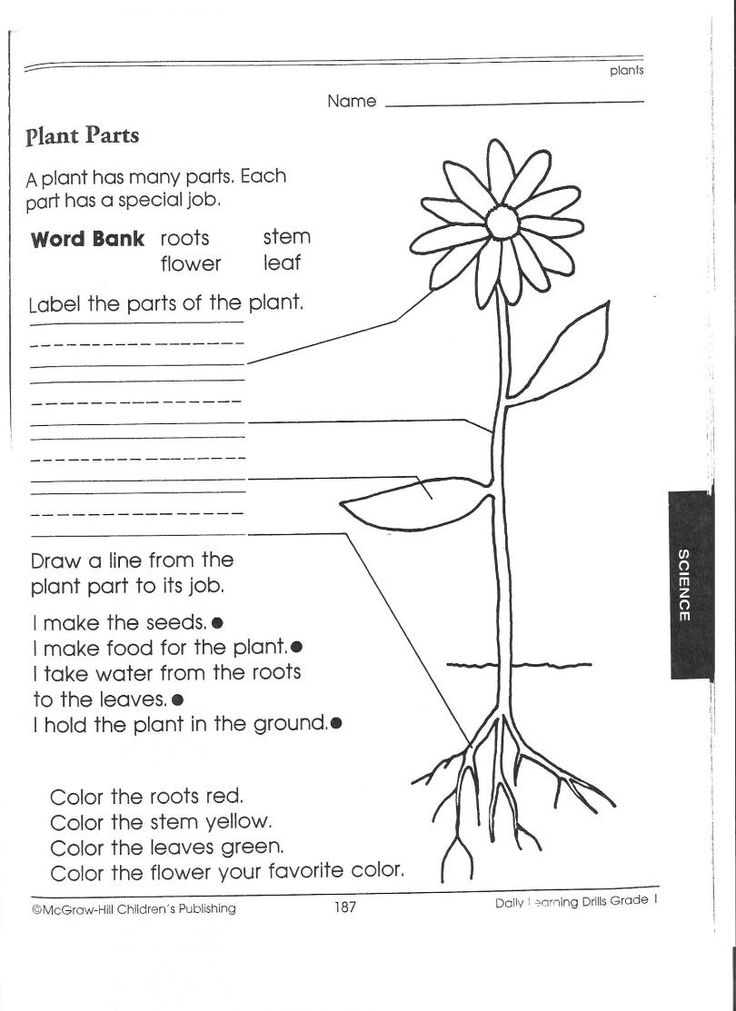 He turned into a small silver flower, which the Indians gave a name - a shooting star.
He turned into a small silver flower, which the Indians gave a name - a shooting star.  The robbers in wild anger cut the tree into pieces and scattered it on fast horses over the steppes and foothills. But where a part of the magic tree fell, a new plant appeared in that place, on which a hundred tender buds, a hundred resurrected girlish hearts, bloomed every spring. This tree was a magnolia.
The robbers in wild anger cut the tree into pieces and scattered it on fast horses over the steppes and foothills. But where a part of the magic tree fell, a new plant appeared in that place, on which a hundred tender buds, a hundred resurrected girlish hearts, bloomed every spring. This tree was a magnolia.  “Everything that inhabits the earth thanks me. Flowers send me their fragrances, forests - their mysterious whispers, birds - their singing, and only you do not express gratitude and stubbornly remain silent, although it is no one else, but it is I who fill the roots of cereals with rainwater and make the golden ears ripen. “I am grateful to you,” answered the field. “I decorate the arable land with vibrant greenery in spring, and in autumn I cover it with gold. There is no other way I can express my gratitude to you. I have no way to ascend to you; give it, and I will shower you with caresses and talk about love for you. Help me". "Heaven well agreed, - if you cannot ascend to me, then I will descend to you." And he ordered the earth to grow magnificent blue flowers among the ears, pieces of himself. Since then, the ears of cereals, with every breath of the breeze, bow to the messengers of heaven - cornflowers, and whisper tender words of love to them.
“Everything that inhabits the earth thanks me. Flowers send me their fragrances, forests - their mysterious whispers, birds - their singing, and only you do not express gratitude and stubbornly remain silent, although it is no one else, but it is I who fill the roots of cereals with rainwater and make the golden ears ripen. “I am grateful to you,” answered the field. “I decorate the arable land with vibrant greenery in spring, and in autumn I cover it with gold. There is no other way I can express my gratitude to you. I have no way to ascend to you; give it, and I will shower you with caresses and talk about love for you. Help me". "Heaven well agreed, - if you cannot ascend to me, then I will descend to you." And he ordered the earth to grow magnificent blue flowers among the ears, pieces of himself. Since then, the ears of cereals, with every breath of the breeze, bow to the messengers of heaven - cornflowers, and whisper tender words of love to them.  When he woke up, he saw a flower next to him and gave it to his girlfriend. And the girl wanted all people to have such a flower. Then Roman went in search of this flower and found it in the country of Eternal Dreams, but the king of this country did not give the flower just like that. The ruler told Roman that the people would get a whole field of chamomile if the young man stayed in his country. The girl waited for her beloved for a very long time, but one morning she woke up and saw a huge white-yellow field outside the window. Then the girl realized that her Roman would never return and named the flower in honor of her beloved - Chamomile! Now the girls are guessing on a camomile - "Loves does not love!"
When he woke up, he saw a flower next to him and gave it to his girlfriend. And the girl wanted all people to have such a flower. Then Roman went in search of this flower and found it in the country of Eternal Dreams, but the king of this country did not give the flower just like that. The ruler told Roman that the people would get a whole field of chamomile if the young man stayed in his country. The girl waited for her beloved for a very long time, but one morning she woke up and saw a huge white-yellow field outside the window. Then the girl realized that her Roman would never return and named the flower in honor of her beloved - Chamomile! Now the girls are guessing on a camomile - "Loves does not love!" 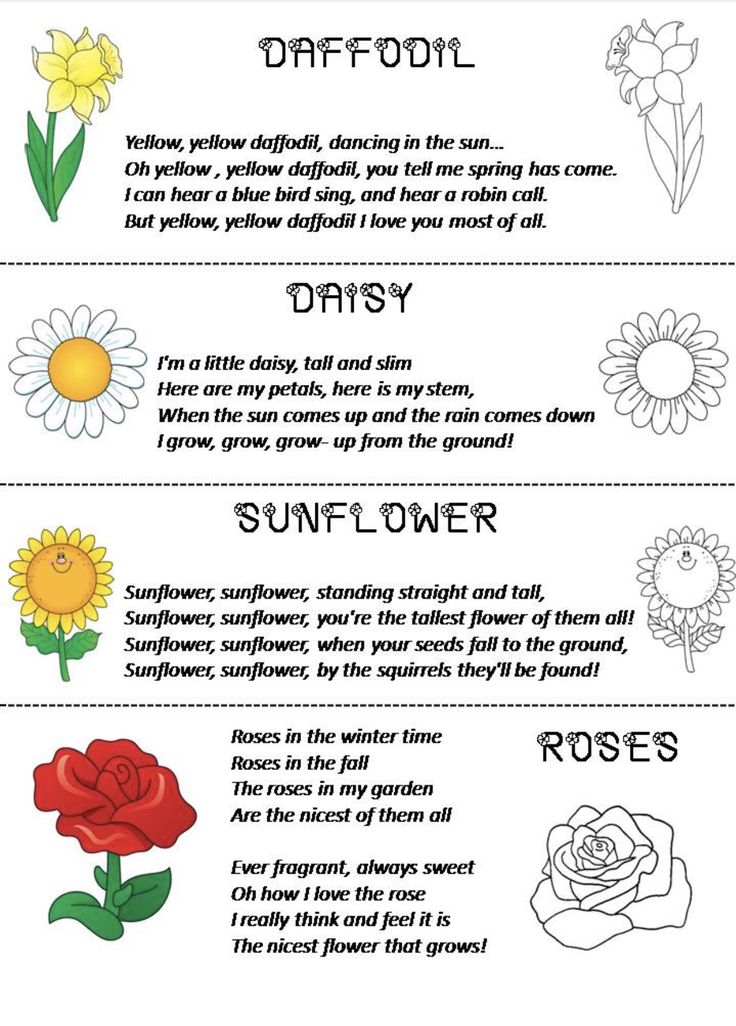 There is a national holiday of chrysanthemums, which is celebrated in October. Still arguing about whether China or Japan is the birthplace of chrysanthemums? In both countries, these flowers are loved and bred. But this is what one legend has preserved for us. Once upon a time, many centuries ago, a mighty emperor ruled in China. He was not afraid of anything in the world, except for old age, and he thought of only one thing: to rule and live as long as possible. And so he called his chief physician and ordered to prepare a drug that would prolong his youth. The cunning physician bowed low before the emperor: “Oh, mighty lord,” he said. - I could prepare such an elixir, but for this you need to get wonderful flowers that grow in the east, on distant islands ... - I will order those flowers to be delivered immediately! cried the emperor. “Oh, if only it were that easy,” the doctor sighed. - The whole secret is that a person with a pure heart should pick them - only then the plant will give its miraculous power .
There is a national holiday of chrysanthemums, which is celebrated in October. Still arguing about whether China or Japan is the birthplace of chrysanthemums? In both countries, these flowers are loved and bred. But this is what one legend has preserved for us. Once upon a time, many centuries ago, a mighty emperor ruled in China. He was not afraid of anything in the world, except for old age, and he thought of only one thing: to rule and live as long as possible. And so he called his chief physician and ordered to prepare a drug that would prolong his youth. The cunning physician bowed low before the emperor: “Oh, mighty lord,” he said. - I could prepare such an elixir, but for this you need to get wonderful flowers that grow in the east, on distant islands ... - I will order those flowers to be delivered immediately! cried the emperor. “Oh, if only it were that easy,” the doctor sighed. - The whole secret is that a person with a pure heart should pick them - only then the plant will give its miraculous power . .. The emperor thought: he knew that neither he nor his courtiers were fit to fulfill this condition. And then he decided to send 300 boys and 300 girls to the islands: surely among them there are many people with a pure heart! They did just that - they equipped many ships and sent them, led by the imperial doctor, to the islands - to where Japan is now located. On one of them they found a beautiful flower - a chrysanthemum and could not stop admiring it! “I don’t know if this flower is suitable for an elixir,” exclaimed the healer, “but, without a doubt, it pleases the heart and rejuvenates the soul!” The wise doctor knew well the insidious and cruel disposition of his emperor. “Surely,” he thought, “the emperor will think that my companions and I were the first to try the elixir, and will order us all to be executed as soon as he receives the drug.” And then everyone decided not to go back. They stayed on the islands and founded a new state there. It is not known whether they have prepared a wonderful elixir or not, but the chrysanthemum has become their favorite flower.
.. The emperor thought: he knew that neither he nor his courtiers were fit to fulfill this condition. And then he decided to send 300 boys and 300 girls to the islands: surely among them there are many people with a pure heart! They did just that - they equipped many ships and sent them, led by the imperial doctor, to the islands - to where Japan is now located. On one of them they found a beautiful flower - a chrysanthemum and could not stop admiring it! “I don’t know if this flower is suitable for an elixir,” exclaimed the healer, “but, without a doubt, it pleases the heart and rejuvenates the soul!” The wise doctor knew well the insidious and cruel disposition of his emperor. “Surely,” he thought, “the emperor will think that my companions and I were the first to try the elixir, and will order us all to be executed as soon as he receives the drug.” And then everyone decided not to go back. They stayed on the islands and founded a new state there. It is not known whether they have prepared a wonderful elixir or not, but the chrysanthemum has become their favorite flower. ..
.. 
 Romantic knights, for whom the Virgin Mary served as an ideal, chose the humble daisy as their flower. According to custom, a knight in love brought a bouquet of daisies to the lady of the heart. If the lady dared to answer "yes", she chose the largest daisy from the bouquet and gave it to the man. From that moment on, he was allowed to draw a daisy on his shield - a sign of mutual love. But if the lady was indecisive, she wove a wreath of daisies and gave it to the knight. Such a gesture was not considered a categorical refusal, and sometimes, until the end of his life, the owner of a wreath of daisies waited for the favor of a cruel lady.
Romantic knights, for whom the Virgin Mary served as an ideal, chose the humble daisy as their flower. According to custom, a knight in love brought a bouquet of daisies to the lady of the heart. If the lady dared to answer "yes", she chose the largest daisy from the bouquet and gave it to the man. From that moment on, he was allowed to draw a daisy on his shield - a sign of mutual love. But if the lady was indecisive, she wove a wreath of daisies and gave it to the knight. Such a gesture was not considered a categorical refusal, and sometimes, until the end of his life, the owner of a wreath of daisies waited for the favor of a cruel lady.  The flowers were dressed in their brightest outfits, shone with freshness and were fragrant with various aromas. However, no one had any doubt that only a beautiful rose could replace Flora. It has no equal in beauty, aroma and grace of a flower. One peony thought otherwise. He puffed up as much as possible to outdo the rose with the pomp and size of the flower. He looked at everyone with pride and contempt, no doubt that it was he who was worthy to be the rival of the rose. And when Flora crowned the rose with her wreath, he alone shouted: "I do not agree!" The goddess got angry. "Stupid flower," she told him. For your self-satisfaction, always remain so swollen and fat. May butterflies and bees never visit you. You will be a symbol of pride, conceit and swagger. Peony blushed with shame at these words.
The flowers were dressed in their brightest outfits, shone with freshness and were fragrant with various aromas. However, no one had any doubt that only a beautiful rose could replace Flora. It has no equal in beauty, aroma and grace of a flower. One peony thought otherwise. He puffed up as much as possible to outdo the rose with the pomp and size of the flower. He looked at everyone with pride and contempt, no doubt that it was he who was worthy to be the rival of the rose. And when Flora crowned the rose with her wreath, he alone shouted: "I do not agree!" The goddess got angry. "Stupid flower," she told him. For your self-satisfaction, always remain so swollen and fat. May butterflies and bees never visit you. You will be a symbol of pride, conceit and swagger. Peony blushed with shame at these words.  She named all the flowers and was about to leave, but suddenly she heard a weak voice: - Do not forget about me, Flora! Give me a name too! With difficulty, the goddess saw a small blue flower in the forbs. - Well, - the goddess took pity, - be Forget-me-not. Together with the name, I endow you with wonderful power: you will return the memory to those people who begin to forget their homeland or their loved ones.
She named all the flowers and was about to leave, but suddenly she heard a weak voice: - Do not forget about me, Flora! Give me a name too! With difficulty, the goddess saw a small blue flower in the forbs. - Well, - the goddess took pity, - be Forget-me-not. Together with the name, I endow you with wonderful power: you will return the memory to those people who begin to forget their homeland or their loved ones.  All the men rose to fight the monster, and only Song Shiho went over to the camp of the enemy and became the yellow dragon's faithful assistant. Ginseng, on the other hand, volunteered to fight the dragon one on one. Desperately fought with the dragon Ginseng. The monster spewed flames at him, scratched him with claws, but Ginseng survived. And not only survived, but also threw the enemy to the ground. And the traitor Song Shi-ho Ginseng captured and tied to a rock, so that later he could be judged by the court of the people. But the captured Song Shiho was seen by Ginseng's sister, the beautiful Liu La, and fell in love at first sight. At night, she crept up to the rock, cut the rope that the captive was tied to, helped deceive the vigilant guards, and rode away with Song Shiho. Ginseng rushed in pursuit of the fugitives and overtook them. Nearer and nearer came the sound of his horse's hooves. And now Liu La, in fright, hid behind a rock, and the soldiers, dismounting, began the duel.
All the men rose to fight the monster, and only Song Shiho went over to the camp of the enemy and became the yellow dragon's faithful assistant. Ginseng, on the other hand, volunteered to fight the dragon one on one. Desperately fought with the dragon Ginseng. The monster spewed flames at him, scratched him with claws, but Ginseng survived. And not only survived, but also threw the enemy to the ground. And the traitor Song Shi-ho Ginseng captured and tied to a rock, so that later he could be judged by the court of the people. But the captured Song Shiho was seen by Ginseng's sister, the beautiful Liu La, and fell in love at first sight. At night, she crept up to the rock, cut the rope that the captive was tied to, helped deceive the vigilant guards, and rode away with Song Shiho. Ginseng rushed in pursuit of the fugitives and overtook them. Nearer and nearer came the sound of his horse's hooves. And now Liu La, in fright, hid behind a rock, and the soldiers, dismounting, began the duel. They fought for a long time, but Ginseng was a more experienced and courageous warrior: he began to win. Here he raised his sword for the last fatal blow. Liu La screamed in horror. Ginseng shuddered (after all, his sister was screaming), looked around and then received a treacherous blow in the back. Song Shiho was ready to celebrate victory, but, mortally wounded, Ginseng straightened up and plunged his sword into the traitor's chest up to the hilt. And then life left him. Liu La bitterly mourned the death of her brother and beloved. Then she gathered her strength and buried them, but did not leave this terrible place, but spent the night nearby. And the next morning, at the burial place of Ginseng, she saw a plant that had never been seen before, which grew there overnight (the plant grew only on the grave of the hero Ginseng, the grave of the traitor Song Shiho was overgrown with grass). So people called this amazing plant ginseng, in memory of the hero from the Xi Liangji clan.
They fought for a long time, but Ginseng was a more experienced and courageous warrior: he began to win. Here he raised his sword for the last fatal blow. Liu La screamed in horror. Ginseng shuddered (after all, his sister was screaming), looked around and then received a treacherous blow in the back. Song Shiho was ready to celebrate victory, but, mortally wounded, Ginseng straightened up and plunged his sword into the traitor's chest up to the hilt. And then life left him. Liu La bitterly mourned the death of her brother and beloved. Then she gathered her strength and buried them, but did not leave this terrible place, but spent the night nearby. And the next morning, at the burial place of Ginseng, she saw a plant that had never been seen before, which grew there overnight (the plant grew only on the grave of the hero Ginseng, the grave of the traitor Song Shiho was overgrown with grass). So people called this amazing plant ginseng, in memory of the hero from the Xi Liangji clan. 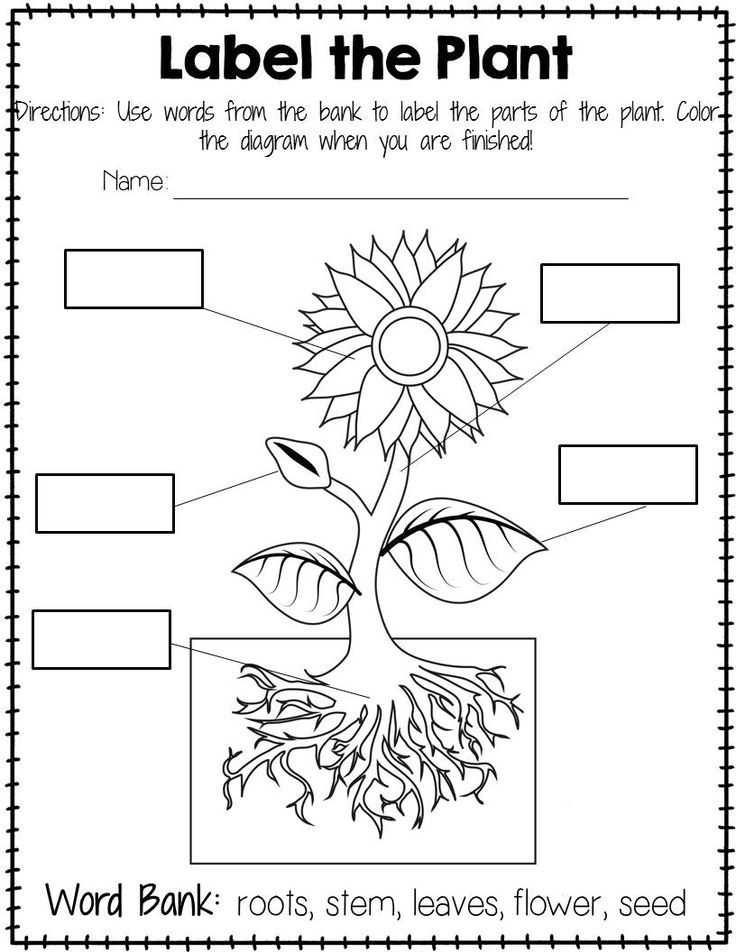 From time to time the sun thawed the snow, thus causing the water to descend from the mountains in a stormy stream, forming amazing waterfalls. Those, in turn, rushed towards the seas and oceans with seething foam, after which, evaporating, they formed curly clouds. These clouds, in the end, completely blocked the view of the earth from the sun. Once the sun wanted to pierce this impenetrable cover. There was heavy tropical rain. After him, a huge rainbow formed, embracing the entire sky. Fascinated by the hitherto unseen spectacle, the immortal spirits, then the only inhabitants of the earth, began to flock to the rainbow from all, even the most remote, edges. Everyone wanted to grab a place on the colorful bridge. They pushed and fought. But then everyone sat down on the rainbow and sang in unison. Little by little, the rainbow sagged under their weight, until, finally, it collapsed to the ground, crumbling into a myriad of small multi-colored sparks. Immortal spirits, who had never seen anything like it before, watched the fantastic colorful rain with bated breath.
From time to time the sun thawed the snow, thus causing the water to descend from the mountains in a stormy stream, forming amazing waterfalls. Those, in turn, rushed towards the seas and oceans with seething foam, after which, evaporating, they formed curly clouds. These clouds, in the end, completely blocked the view of the earth from the sun. Once the sun wanted to pierce this impenetrable cover. There was heavy tropical rain. After him, a huge rainbow formed, embracing the entire sky. Fascinated by the hitherto unseen spectacle, the immortal spirits, then the only inhabitants of the earth, began to flock to the rainbow from all, even the most remote, edges. Everyone wanted to grab a place on the colorful bridge. They pushed and fought. But then everyone sat down on the rainbow and sang in unison. Little by little, the rainbow sagged under their weight, until, finally, it collapsed to the ground, crumbling into a myriad of small multi-colored sparks. Immortal spirits, who had never seen anything like it before, watched the fantastic colorful rain with bated breath. Every particle of the earth gratefully accepted the fragments of the heavenly bridge. Those that were caught by the trees turned into orchids. From this began the triumphal procession of orchids across the earth. There were more and more multi-colored lanterns, and not a single flower dared to challenge the right of an orchid to be called the queen of the flower kingdom.
Every particle of the earth gratefully accepted the fragments of the heavenly bridge. Those that were caught by the trees turned into orchids. From this began the triumphal procession of orchids across the earth. There were more and more multi-colored lanterns, and not a single flower dared to challenge the right of an orchid to be called the queen of the flower kingdom.  Prayer meetings usually took place in the late evening hour, when everything in the gardens calmed down and plunged into a deep sleep. Then one of the elves ran to the flexible stem of the lily and began to shake it. Lily bells rang and woke up sweetly sleeping elves with their silvery ringing. The tiny creatures woke up, crawled out of their soft beds, and silently and solemnly went to the lily corollas, which served them at the same time as chapels. Here they bowed their knees, folded their hands piously and thanked the Creator in fervent prayer for the blessings sent to them. Having prayed, they just as silently hurried back to their flower cradles and soon fell asleep again in a deep, carefree sleep...
Prayer meetings usually took place in the late evening hour, when everything in the gardens calmed down and plunged into a deep sleep. Then one of the elves ran to the flexible stem of the lily and began to shake it. Lily bells rang and woke up sweetly sleeping elves with their silvery ringing. The tiny creatures woke up, crawled out of their soft beds, and silently and solemnly went to the lily corollas, which served them at the same time as chapels. Here they bowed their knees, folded their hands piously and thanked the Creator in fervent prayer for the blessings sent to them. Having prayed, they just as silently hurried back to their flower cradles and soon fell asleep again in a deep, carefree sleep...  The ancient Germans assured that this was not a berry at all, but burning tears with which the lily of the valley mourns her parting with Spring. Spring, though loved the lily of the valley, but not for long. Forever young and restless, Spring does not find peace for herself and, scattering caresses to everyone, does not happen to anyone for a long time. In passing, she caressed the lily of the valley. He blossomed with happiness, reached out to Spring, but she left the poor thing in the middle of a hot forest. The lily-of-the-valley drooped with grief, its flowers fell off, and a tear-drop of blood rolled out of the stalk.
The ancient Germans assured that this was not a berry at all, but burning tears with which the lily of the valley mourns her parting with Spring. Spring, though loved the lily of the valley, but not for long. Forever young and restless, Spring does not find peace for herself and, scattering caresses to everyone, does not happen to anyone for a long time. In passing, she caressed the lily of the valley. He blossomed with happiness, reached out to Spring, but she left the poor thing in the middle of a hot forest. The lily-of-the-valley drooped with grief, its flowers fell off, and a tear-drop of blood rolled out of the stalk. 









